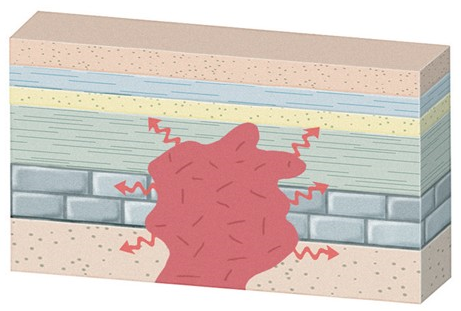What distinguishes soil horizons?
What will be an ideal response?
Answer: Soil horizons are distinct because of differences in organic matter and mineral content that result from additions, subtractions, and transformations of minerals resulting from chemical weathering, and addition of organic matter. A and O horizons contain added organic matter. A horizons also show evidence of mineral subtraction. The E horizon, where present, is a nearly white horizon defined by an absence of organic matter, clay, colorful oxide and hydroxide minerals, or easily weathered minerals present in the parent material. The B horizon is notable for additions of colorful oxide and hydroxide minerals and clays. Calcite is present in arid-region B horizons. The C horizon is weakly weathered, unconsolidated regolith below the zone of accumulated minerals defining the B horizon.
You might also like to view...
The type of metamorphism that would occur in this setting is

A) regional metamorphism.
B) contact metamorphism.
C) subduction.
D) thrust faulting.
When an object is lifted 10 m, it gains a certain amount of potential energy. If the same object is lifted 20 m, its potential energy gain is
A) less. B) the same. C) twice as much. D) four times as much. E) more than four times as much.
What factor is rarely a difficulty for marine organisms?
a. salinity b. pHhydrostatic pressure c. iron availability d. iron availability
Mesa-and-scarp terrain is notable for its vivid colors of reds, yellows, browns and grays. These colors are mainly due to the presence of ________ compounds in the sedimentary rocks
Fill in the blank(s) with the appropriate word(s).